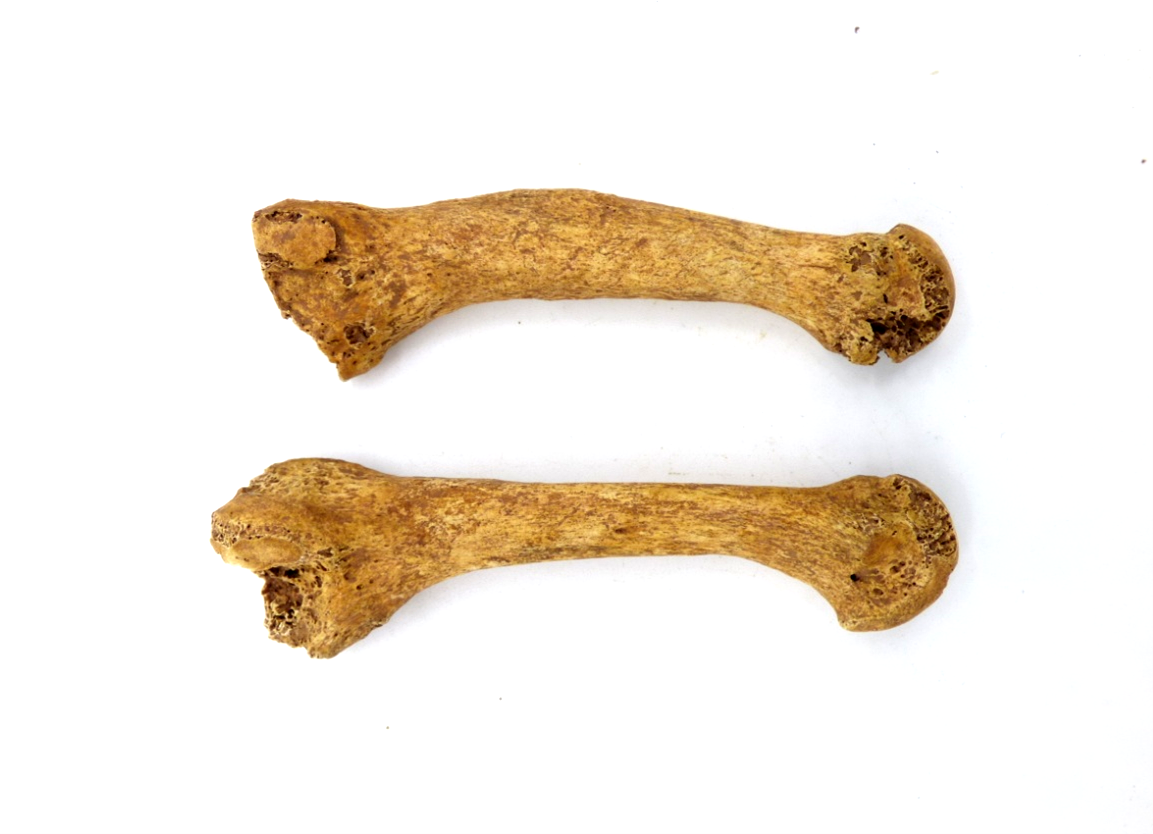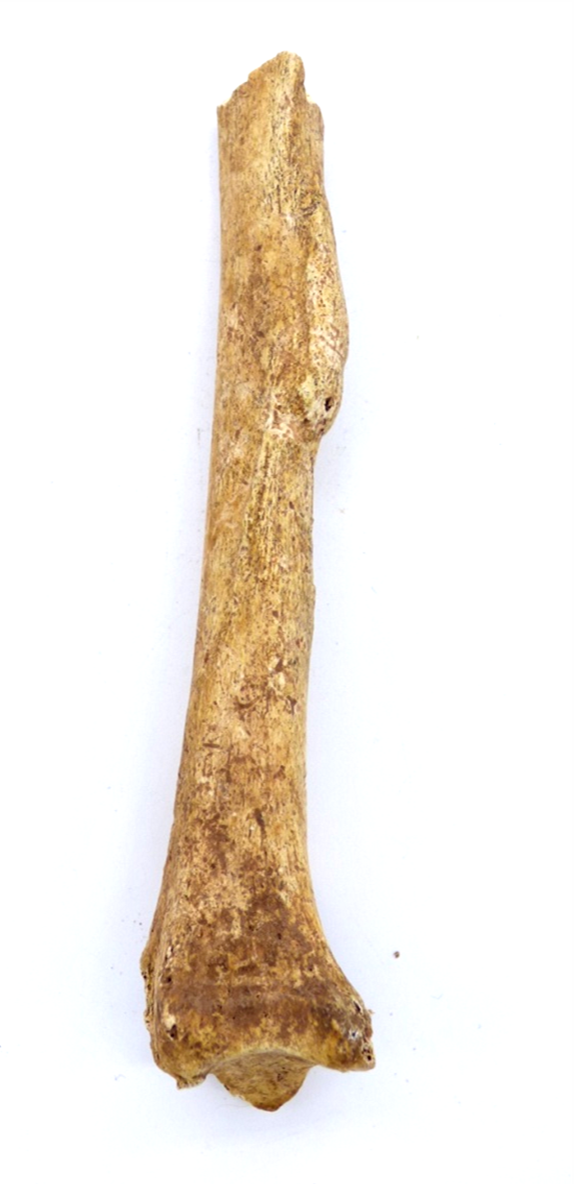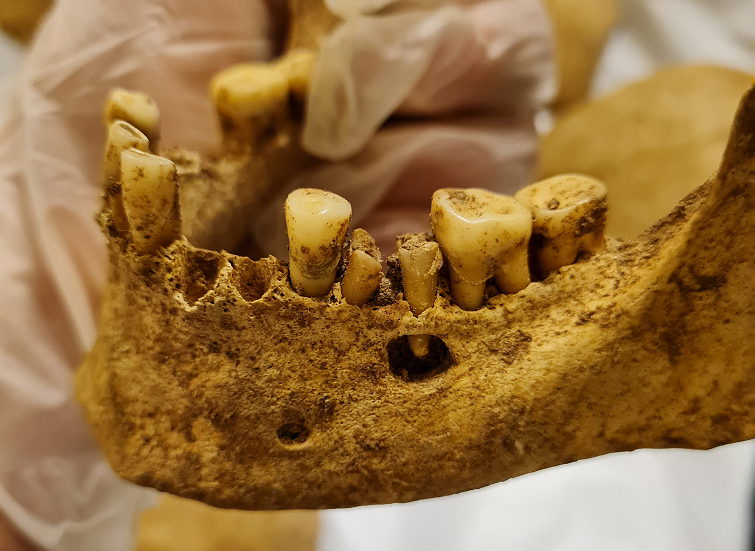Body on the Bromyard Line 2 – The Osteological Analysis
- 15th May 2024
This is the second in a series of five posts exploring the story behind the human skeleton found buried within an embankment of the Worcester, Bromyard and Leominster railway line in 2021, close to Riverlands Farm in Leigh, to the west of Worcester.
Over this mini-series we explore the discovery, and what we have learnt through the archaeological excavation, scientific analyses and documentary research. Built in the 1860s, the line eventually closed in the 1960s, and by 2021 all that remained was the earthwork of the former embankment that took a narrow lane up and over the railway. Hidden within the bank was a single human skeleton (see Blog 1: The Discovery).
Please be aware that this page contains images of human remains.
The first step in the process to find out more was to send the remains off to Gaynor Western, the osteoarchaeologist at Ossafreelance. She undertook a physical assessment and took samples for the scientific analysis, which she sent off to Durham University (isotope analysis), SUERC (carbon-14 dating) and The Crick Institute (DNA sequencing). Most of the bones had been broken by the machine, so we had few complete bones. The bone itself, however, was in good condition, and we had the jaws and teeth. Gaynor was able to take the samples for the scientific analysis as hoped.
The physical analysis of the skeleton showed the body to be that of a male, around 1.68m (5’5”) tall and aged between 28 and 40 at death. There was no obvious cause of death, but the skeletal remains exhibited a number of pathological changes that were associated with physically strenuous activity. There had been repeated intensive use of the right shoulder joint and a ‘march’ fracture of the left second metatarsal (foot bone), also often found in active individuals placing repetitive physical stress on the feet, such as when marching. An ossified haematoma – bleeding or blood clot that has led to a growth on the bone – resulting from trauma may also be present on the left radius (lower arm bone). Minor degenerative changes were seen in the spine, which may have been caused at least in part by physical activity.
The osteological evidence suggests that this individual may have been undertaking manual labour or was exposed to an environment where risk of trauma was high, possibly suggesting a lower status individual. Additionally, the presence of cribra orbitalia (pitting in the eye sockets) and dental enamel damage might result from malnutrition and/or infection during childhood.

Well healed fracture of the left second metatarsal, a bone in the foot. Below it is a normal right second metatarsal for comparison (Ossafreelance)

The left radius, showing extra growth of bone that extends outward from the normal bone. This might have been caused by a hematoma, which is essentially a severe bruise, causing pooling of blood outside the blood vessel. (Ossafreelance)
The presence of several dental caries, two of which were severe, as well as dental abscesses could be linked to a diet high in sugar and poor dental hygiene. Sugar increasingly became a significant part of people’s diets from the Victorian period onwards, as it became a cheap, staple source of high calorific foodstuffs among the lower classes, consumed in jam as well as in tea.

The lower jaw showing the very worn teeth, caries and one of the abscesses.
Initial analysis, therefore, supports the theory that this body could be from a railway worker, as he had led a physically strenuous life. Will the isotope analysis narrow down where he was from? If he was a railway worker, what would his life had been like? Find out in the next instalment; Body on the Bromyard Line Blog 3
The information in this post is taken from:
Western, G. 2023. Osteological Analysis of the Human Remains from River Lands Farm, Leigh, Worcestershire. Ossafreelance report no.OA1125
Post a Comment